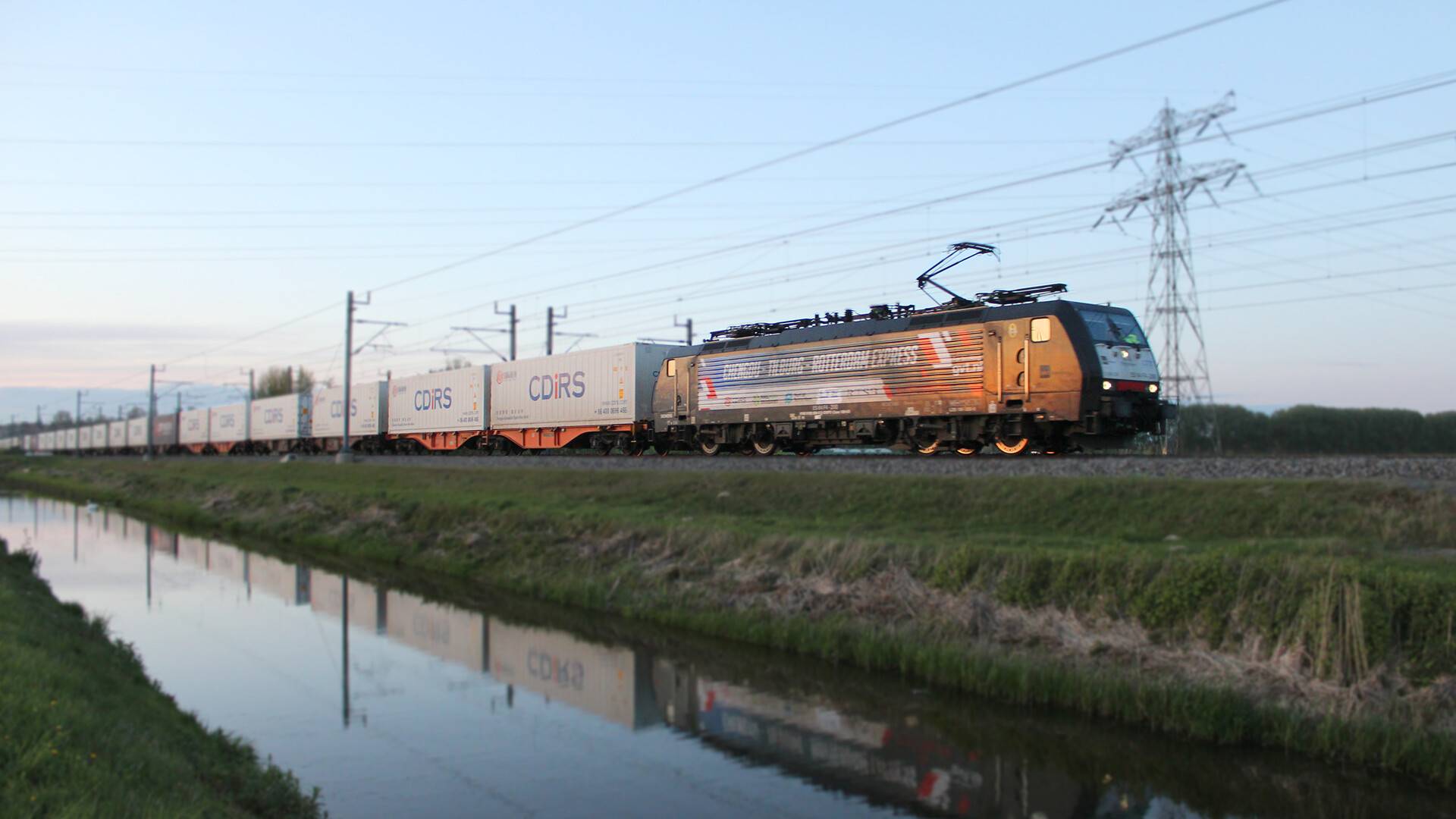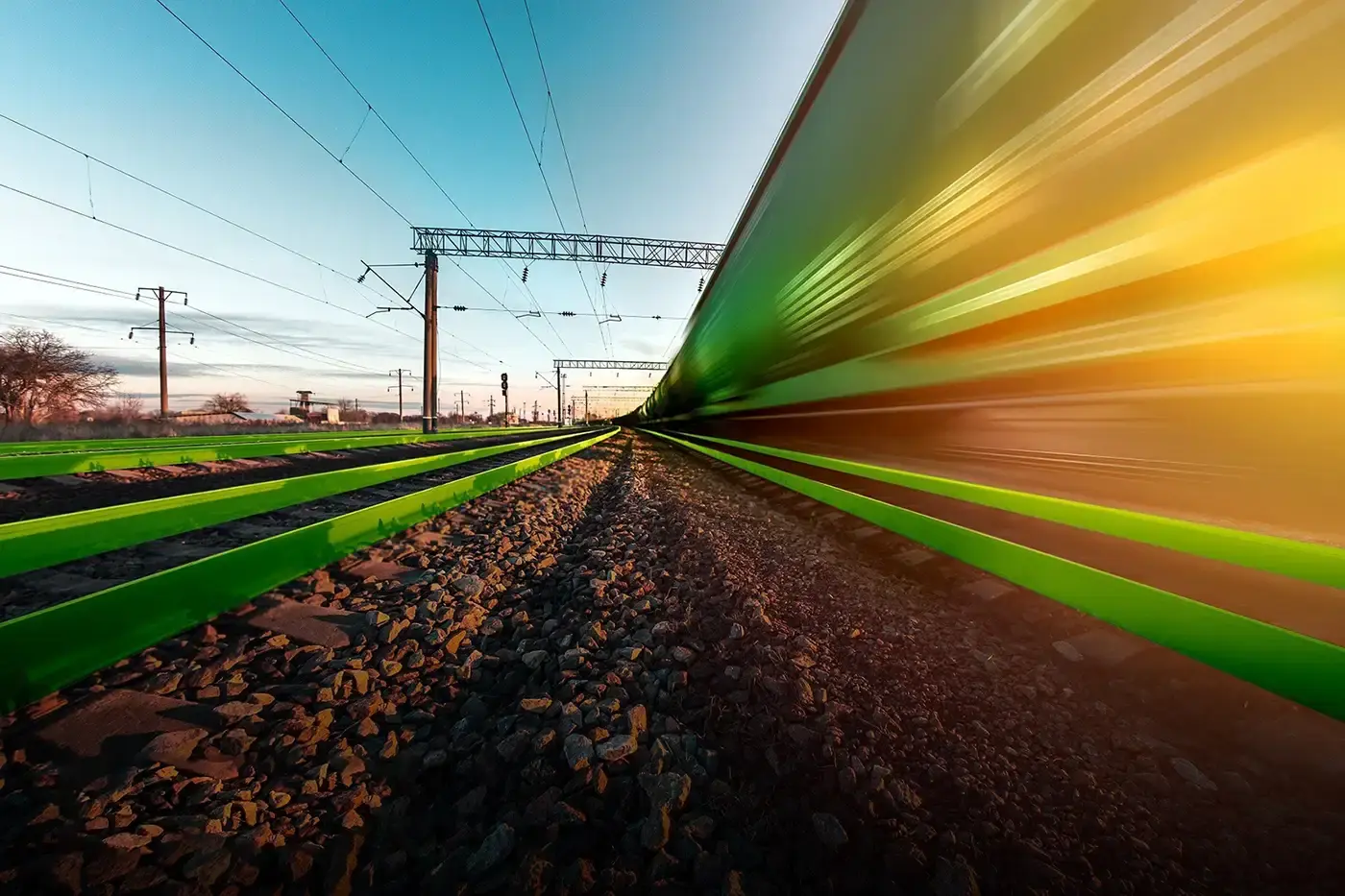Door-to-door via
rail transport from and
to China!
Rail Cargo Information Netherlands
China
The evolution of rail transport between China and Europe
Rail transport to China mainly consists of container trains. What initially seemed like a specialty has become a normal mode of transport in 2019. China trains have a direct service to the terminal in Tilburg, and the frequencies are rapidly increasing. Currently, more than 6,000 trains per year run between China and Europe via the Belt and Road Initiative. These are almost all intermodal trains, some of which are dedicated to one customer or shipper. Some are also public trains, including a regular connection to Tilburg (Railport Brabant) and Venlo (Cabooter Terminal).
What train connections are there to China
After the Chinese government announced in September 2013 that it would invest a lot of money in the One Belt, One Road (OBOR) project over the coming decades. With this project, the Chinese government aims to revive the ancient Silk Roads. Trade was conducted over these routes centuries ago using camels. These have now been replaced by trains. The goods are no longer silk or spices but rather notebooks and other electronics. Approximately $40 billion has been allocated for the development of ports, rail terminals, pipelines, and other infrastructure.
The Belt and Road Initiative affects 65 countries and 63 percent of the world’s population. Although the name suggests that it is just one route, the Belt and Road Initiative can roughly be divided into three separate routes. Firstly, the northern route via Russia. It has been in use for a long time and mainly serves northeastern China. An important alternative is the route via Belarus, Russia, and Kazakhstan, using Khorgos Gateway as a hub. Khorgos is the intersection of several roads connecting Russia, Iran, and India. Because the Kazakhs want to be less dependent on income solely from oil, they see Khorgos as a significant trade hub between Europe and Asia.
For both routes, at the Polish/Belarusian border and at the Kazakh/Chinese border, containers must be transferred to another wagon. This is due to the different (wider) track gauge in Russia and Kazakhstan. Due to the explosive growth in the number of trains to and from China, congestion has occurred at the terminals in Brest/Malaszewicze.
This is mainly because there is no subsidy from China for other border crossings to Western Europe. Therefore, operators are more or less forced to use these border crossings. A third route runs through Turkey, Armenia, Azerbaijan, Turkmenistan, Uzbekistan, and Kazakhstan to China. This route is mainly used due to the embargo in Russia on various Western European products. However, the route requires much handling, longer transit times, and limited traceability. Therefore, for fresh and food products, the transit time is quickly too long. Many products from Southeast Europe, therefore, go through Duisburg or Lodz (Poland).
What are the logistical advantages?
- Quick delivery and cost-saving
Compared to air freight, rail transport is about ten times cheaper. This represents significant savings, which many shippers benefit from. Compared to deep-sea shipping, the transit time is approximately half, or a saving of about 20 days. This allows shippers to reach their customers in China/Europe faster and simultaneously realize savings in working capital.
- More risk diversification
With the Belt and Road Initiative, shippers can choose a third modality alongside ocean and air freight. This means better risk diversification. In case of emergencies, shippers/expeditors can more easily switch modalities.
Via Routescanner, you get insight into all global (rail) connections for your container transport. Check out the map below and plan your transport directly:
Best Practices
Intermodal is
interesting for
great volumes
Transporting volumes via a combination of modalities with the track as a pivot: there is still a lot to be gained. We speak to shippers who have already made the switch. Why do they choose intermodal and what are the challenges? This time speaking, Wilco the Black of Outokumpu.

